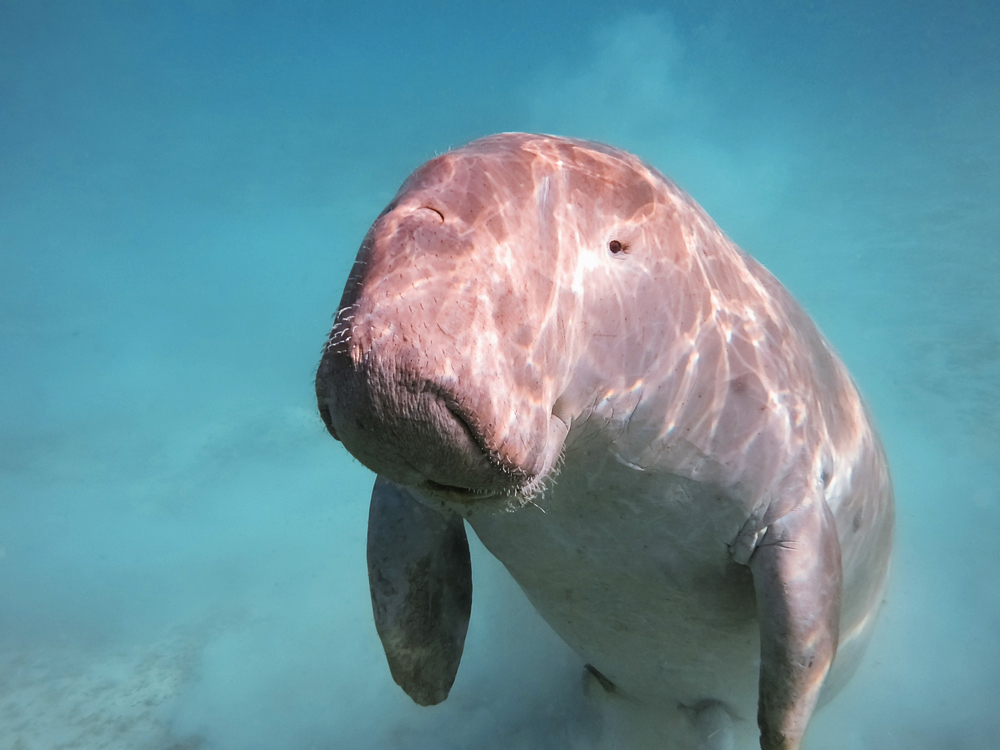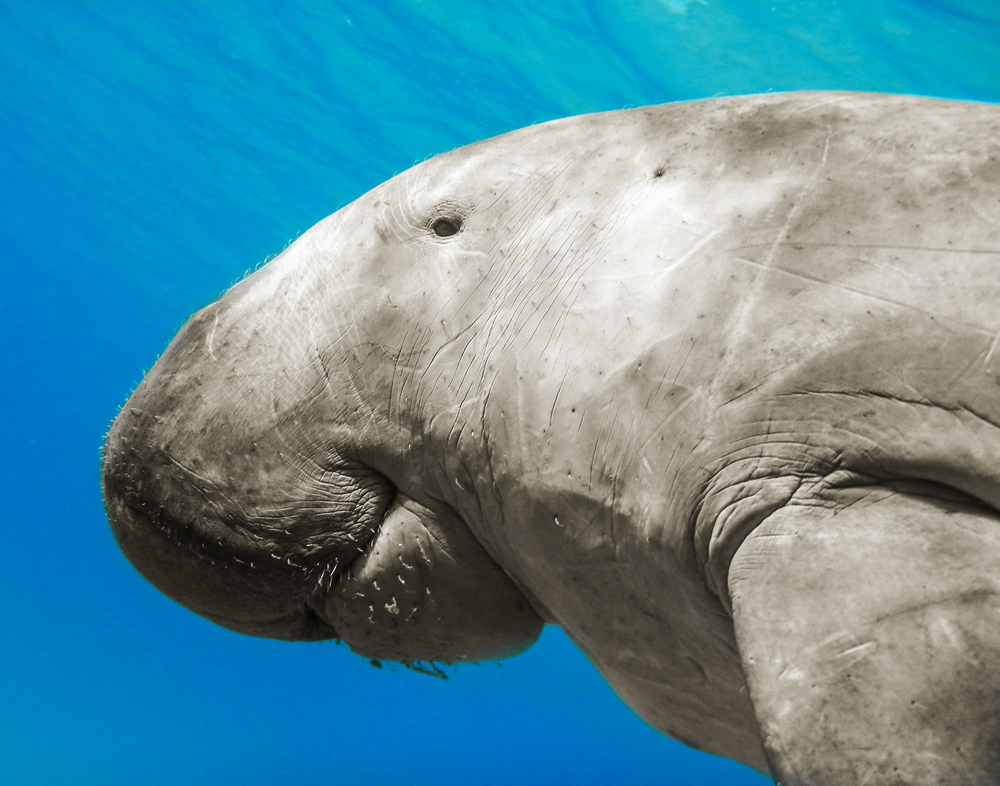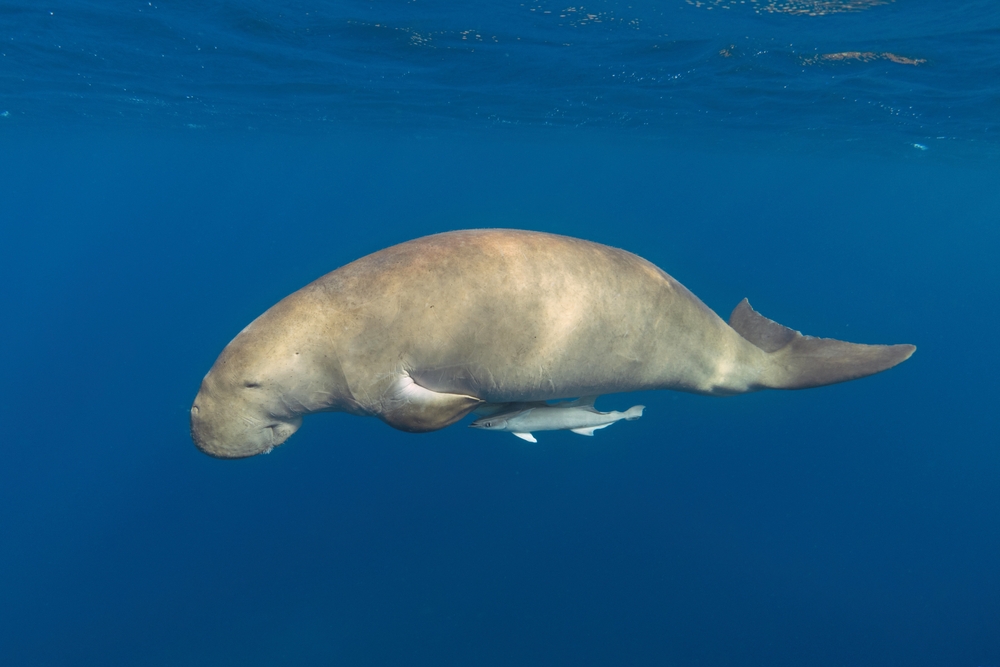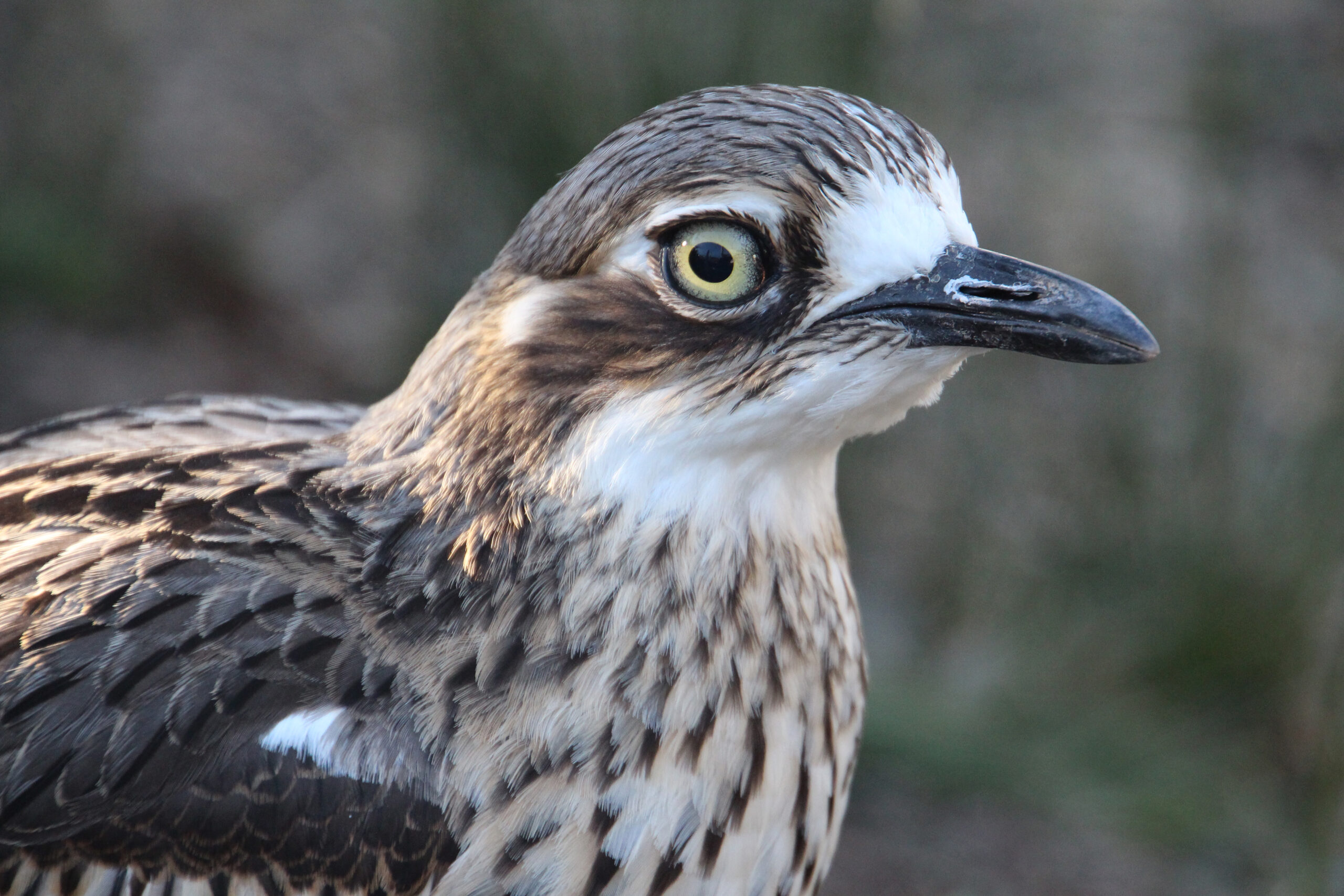| Common name | Dugong |
| Scientific name | Dugong dugon |
| Type | Mammal |
| Diet | Herbivore, feeding exclusively on seagrasses |
| Average lifespan | Up to 70 years in the wild |
| Size | 3 metres |
The dugong is one of the ocean’s most interesting inhabitants.
More closely related to the elephant than the dolphin or whale, this gentle seagrass-munching mammal is often given the name ‘sea cow’ and rightly so. Grazing day and night on the aquatic version of lawn, this ocean dweller is a true mixture of all things great and small, and Australia is lucky enough to host the largest number of dugongs in the world.
Tipping the scales at an impressive 400kg, the dugong is a cousin of the manatee. Sharing a pudgy, plump body shape, the dugong has a dolphin fluke-like tail and lives exclusively in salt water, unlike its fresh-water swimming relative. With an elongated snout that faces downwards towards its food source, the dugong is likely to give some spikey kisses, thanks to its enormous and sensitive, bristly upper lip which it uses to help find food. Like elephants, dugongs have tusks, which are projections of the incisor teeth and usually only visible through the skin in mature males.

Primarily herbivorous, the dugong snacks day and night, grazing on up to 30kg of seagrass per day. Generally cruising the shallow waters of protected bays, mangrove channels or sheltered areas of inshore islands, dugongs tend to stay in water around 10 metres deep. These aquatic mammals occasionally dive down to depths of 39 metres to feed on their main food source, seagrass beds of phanerogamous seagrasses, which are found in warm waters around coastlines, both north and south of the equator.
With a brain that makes up just 0.01% of its body weight (that’s 300grams of 400kg!), the gentle dugong could be presumed to be one of the more dim-witted oceanic species. Yet despite this brain to body mass ratio, dugongs have good memories and can remember specific feeding grounds, in which they return to after travelling away.
Found in groups of either mother and calf pairs or up to 200 animals, dugongs are semi-nomadic and may spend a considerable time journeying to find specific seagrass beds. The eyesight of the dugong is poor, with the animal relying on other senses to create a mental map of their surroundings. Underwater, dugongs use chirps, whistles, barks, and other sounds that echo to communicate with each other, with varying amplitude and frequency of signals implying a possible purpose behind the sounds.
Using their sense of smell to detect other dugongs or to locate aquatic plants, these gentle and shy creatures also have sensory bristles all over their bodies which they use to sense vibrations from their surrounds. Touch is also important and mothers and their calves engage in physical communication including nuzzling and nose touching to help strengthen their relationship.
A female enters maturity between the ages of 12 and 17 years of age and may have one calf every three to seven years. A calf can swim as soon as it is born and is nursed by its mother. Baby dugongs have also been seen to suck on their fin for comfort and either swims beneath its mother under her fin or rides on top of her.









